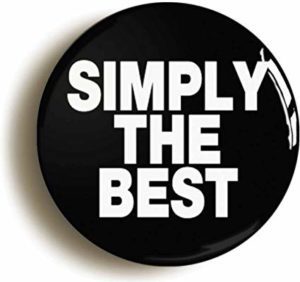The Best Art
Through the years we have seen several aspects of the Martial Arts rise to popularity. In different periods since the end of World War II in the United States we have seen Karate, Judo, Tae Kwon Do, Kenpo, Kung Fu, Krav Maga, Jiu Jitsu and Brazilian Jiu Jitsu each enjoy a period of being the “Superior” of the Arts. At times even some lesser known arts have enjoyed the highlight. Yes, Ninjitsu captured the imagination of Martial Artists everywhere.
What may have helped many of these different aspects rise in popularity was the image of “secrecy” that has been an interesting aspect of the Martial Arts history. Today, however what helps with the popularity is virtually the opposite. It is the transparency that today’s technology with YouTube and other media forms that allows us to see countless examples of virtually all aspects of the Martial Arts.
The important thing to consider or remember is that each of these aspects are not truly unique. They may profess to have “techniques” and applications like no other art but that probably isn’t true. It may look slightly different to the casual observer but in fact the method is based on the same principles as all of the arts and in the end is merely the same “thing.”
What is different is what aspect of the art they are focusing on. Because there is so much of the Art and or Self Defense to study and “master” it is easy to understand why different systems and/or schools would focus on a base aspect.
Let’s look at a brief division of the training aspects that the Martial Arts offer; there is the striking, manipulating, pushing, standing, ground, acrobatic, weapons, competitive, flexibility, meditating, breathing, flowing, balancing, etc. Additionally you can refer to the defensive aspects and then you would have other areas of study to consider.
This can be extremely confusing for someone truly interested in wanting to study the Martial Arts and wanting to train the “Best.” Luckily they are all part of the “Best.” It is really not the style or system that one need be too concerned about (ideally this will make more sense towards the end of the article) but more about the student themselves as what is best.
Although there are many considerations first it might help to understand your individual learning style. Are you a visual learner, a kinesthetic learner or an auditory learner? Although Martial Arts training works through all styles there still is a predominance. For example Stand Up/Striking Arts usually work from a range in which we are at “arm’s length.” We can visually see our opponent and most of their actions. However Ground/Manipulating Arts usually start at bodies touching. Many aspects can’t necessarily be seen and must be felt.
Another consideration would be for the individual to consider their areas of comfort. If they are uncomfortable for what ever reason with the thought of cutting someone. Getting involved right away with a Filipino Art might not be the best choice initially.
Additionally, the individual might want to consider their initial physical attributes. If they are older and/or flexibility is a strong issue. A style that focuses on high kicks may be a greater challenge than expected and actually be discouraging as the individual may recognize their ability to perform is limited. This doesn’t make the individual a “bad” student or the System ineffective just that the two are not suited for each other. It also doesn’t mean that the student won’t enjoy and/or eventually develop the flexibility required to be successful in this system just that it may be longer journey than for others.
Often times what happens is that individuals try a single aspect of the Martial Arts thinking that it is the entirety of the Martial Arts. Which obviously couldn’t be further from the truth. Even still it may not have even been the Art it could be the instructor and his or her preferences that may have been too challenging or didn’t work with the student’s learning style.
So which art is the Best? They all hold important aspects of training. What is important is to ask is, which of the arts are best for you? What are you hoping to gain from your training? Where do you see yourself and what are you doing with your training a few years down the road? What are your short terms goal and your long term goals with your training? Note: they can change because as you get further into the Art you choose, you may find new and exciting aspects that were not part of your goal or you may be introduced to concepts that are limited in your Art, that lead you to another Art. This is not necessarily a bad thing. It just means that your Art is evolving.
Don’t confuse learning and growing with the relationship you develop with your instructor, school and fellow artists. The relationship are important but not necessarily the “Art.” The “Art” is what you gain and develop for yourself. The collective relationships help maintain the system and perpetuate the experience that the Martial Arts offer.
In the end, the Best Art is the Art that you feel is important to you. That challenges you, excites you and motivates you to grow and improve.
Enjoy your training!!


